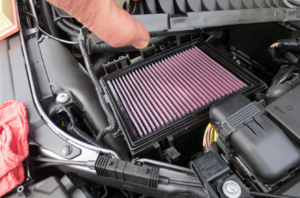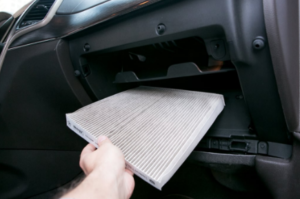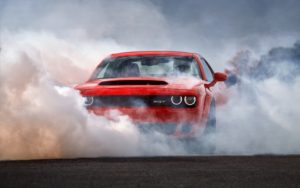Sight, Smell, Touch, Hearing and Taste — well… maybe not Taste.
Car Care … ugh, cringe, yuck. Car Care and General Vehicle Maintenance used to be one of those common household chores. Folks across America with hoods popped on the weekends, kids “holding a light” prepping the family people mover for their next trip. Add a quart of oil (check!).
Nowadays, many people prefer to bring their vehicle in for service. And in the last 25+ years or so, Car Care has morphed into this dark art where only specialists, often held in the same regard as the wizard Merlin, are able to properly maintain your vehicle.
At GTM we’re a bit “old school” and prefer to perform a lot of our own wrench turning. With many trained and shade-tree mechanics on staff, we were able to compile some useful information that you can use to save your self some $$$ and quickly diagnose and/or keep track of your vehicles health. Let’s learn how to use four out of your five senses to help perform a simple diagnosis and health inspection on your vehicle.
First, build a map of your engine compartment
Your map will vary from vehicle to vehicle, but having an understanding of where all of the critical components are located is essential to a proper visual inspection. Example below.

Know Your Colors
First let’s learn how to identify and diagnose fluid related issues with your vehicle. Using your map we can now build a list of all the fluids your vehicle may have and how to identify them:
-
- Fuel (Gasoline, Diesel, Natural Gas)
- Engine Oil: Brown – shade varies based on the manufacturer; usually the same shade as maple syrup
- Transmission Fluid: Manual Transmissions use gear oil which is a light tan color and Automatics use ATF which is a rich garnet red color.
- Differential Fluid (for RWD and AWD vehicles): Similar to gear oil.
- Coolant (aka “Anti-Freeze”): Different colors based on the manufacturer.
- Yellow/Light Green – generic; often found in domestic vehicles
- Red/Pink/Violet/Purple – often found in German Cars (VAG products)
- Orange – GM/Dexcool or for aluminum engines (e.g. Corvette)
- Blue – often found in BMWs
- Power Steering Fluid: Dark green in European Vehicles and garnet red in Domestics (Note: many domestics use ATF as power steering fluid.)
- Brake Fluid: A light golden color similar to Vegetable Oil.
- Windshield Washer Fluid: Generally Light blue, similar to Windex.
- Diesel Exhaust Fluid (DEF, Diesels ONLY): Clear, water-like.
- Refrigerant (Freon/R134; Air-Conditioning System)
Good, Bad or Indifferent

Tip: Any fluid that isn’t Oil, and *is* brown has probably gone bad.
Consider changing your fluids as soon as possible.

The base color of your oil varies on the manufacturer (as seen in 1-5 above), but the end result is the same for all. As the oil ages, breaks down or burns, it will look like the picture above (6-7+). A good rule of thumb is to change your oil every 4 months or 5,000 miles, whichever comes first. Performing a periodic oil analysis will give you clear indicators of anything that might be going wrong in your engine. We recommend sending your samples to BlackStone Labs
Other visual inspections
- Check your tires
Do you have any rollover? Unever wear? How much tread depth do you have left?- Rollover is an indication of improperly inflated tires.
- Uneven tire wear is a good indicator you might be in need of an alignment
- Tread depth… how close is the top of the tread to the “wear bar”? The closer you are the less time you have left before needing a new set of tires.
- Do all of your lights work?
Have a friend help you and visually inspect all of your vehicles lights, including:- High/Low beams (headlights)
- Running lights (front/rear/side)
- Hazard lights (flashers/4-ways)
- Turn signals (left and right)
- Brake lights
- License plate lights (many states can fine you for having this burnt out)
- don’t forget about your reverse lights!
- and IF your vehicle is equipped with Fog lights, check those too.
Is there an odd or foul odor emanating from your vehicle?

We’re not talking about the forgotten bean & cheese burrito that rolled under the seat last week…
Let’s review:
- Coolant: Sickly-sweet, almost citrus-like
- Oil: Burnt fried chicken
- Brakes: Fresh ashes from a fireplace.
- Transmission Fluid: Damp woodsy smell, very unique, “funky”
- Clutch: Burning cork; if you’ve ever put a pot/pan right off the stove onto a cork hot pad, it’s that smell.
- Washer Fluid: Glass cleaner
- Refrigerant (Freon/R134) – Cool, sweet, “heavy”
- Fuel: Smells like fuel, make sure it’s not on your hands or shoes 🙂
- Lean Exhaust: Lit cigarette
- Rich Exhaust: Raw / Unburnt fuel
- Catalytic converter: Sulfur or rotten eggs
- Carbon Monoxide: Odorless and Deadly; If you get really tired or sick after driving your vehicle, you might have an exhaust leak which is giving you CO poisoning. Get the car to a repair shop ASAP!
Did you know your vehicle has 2 kinds of air filters?

Engine Air Filter: Keeps gunk, leaves and other things that don’t belong in your engine, out of your engine. The longer you drive without a regular cleaning or filter change the more likely this filter will get clogged. Check your owners manual for the recommended replacement interval.

Cabin Filter: Many non-engine related odors inside the cabin come from a dirty cabin filter. The cabin filter is designed (like your house filter) to remove particulates, allergens, and odors from outside the car and some from the engine compartment. Cabin filters should be changed regularly. We recommend at least once a year.
Is your car smoking?!? – What color is the smoke?

- White smoke while the engine is running is a sign that the engine is burning coolant (anti-freeze). You might have a leak or blown head gasket that needs to be taken care of immediately.
- Black smoke means the car is running too rich. Unburnt fuel is leaving through the exhaust. You should consider getting a tune up.
- Grey smoke when just turning on the vehicle is generally OK. This means there is condensation (water) in the exhaust system which is being converted to steam.
- Blue smoke means the engine is burning oil. Some older engines tend to burn a bit of oil and that is normal. However, large plumes of blue smoke – especially under acceleration – is indicative of a larger problem.
[Editors Note] We covered hearing cues extensively back in February in an article entitled: “Your car is talking to you, so listen up!”
We know that this guide might not cover everything particular to your vehicle, but there is one source that always does: your VEHICLE OWNERS MANUAL. Consult your manual often, it really does have all the answers, including where to find components, appropriate service intervals and even maintenance instructions. If you’re interested in learning more, contact one of the friendly folks at GTM about our Car Care Clinic.
Top Tip: if you take care of your vehicle, your vehicle won’t let you down.



